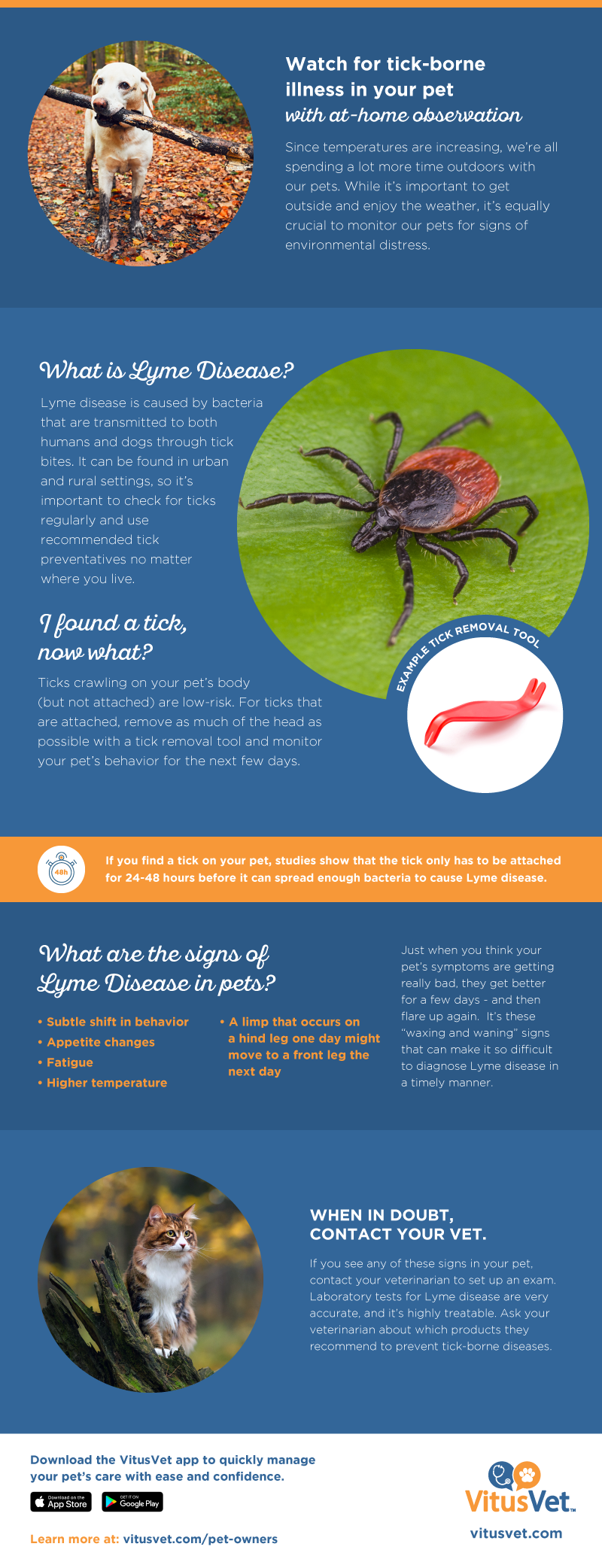Since temperatures are increasing and shelter-in-place orders continue in most U.S. states, we’re all spending a lot more time outdoors with our pets. Longer walks around the block, in the park, or even out in the country can expose our pets (and us) to disease-ridden ticks.
While it’s important to get outside and enjoy the weather, it’s equally crucial to monitor our pets for signs of environmental distress. In honor of Lyme Disease Awareness Month, we’re sharing our top tips for spotting Lyme disease in pets.

Lyme disease is caused by bacteria that are transmitted to both humans and pets through tick bites. It can be found in urban and rural settings, so it’s important to check for ticks regularly and use recommended tick preventatives no matter where you live.
If you find a tick on your pet, remember that the tick has to be attached for 48 hours before it can spread enough bacteria to cause Lyme disease. Ticks crawling on your pet’s body (but not attached) are low-risk. For ticks that are attached, remove as much of the head as possible with a tick removal tool (like this one) and monitor your pet’s behavior for the next few days.
Unlike humans, pets don’t get the classic bullseye lesions that humans get from tick bites.
The most common complaint in pets with Lyme disease is a (sometimes) subtle shift in behavior. A pet that normally has a healthy appetite may stop eating for a few days, be really fatigued, or have a higher temperature.
A limp that occurs on a hind leg one day might move to a front leg the next day. And just when you think your pet’s symptoms are getting really bad, they get better for a few days – and then flare up again. It’s these “waxing and waning” symptoms that can make it so difficult to diagnose Lyme disease in a timely manner.
If you see any of these signs in your pet, contact your veterinarian to set up an exam.
Laboratory tests for Lyme disease are very accurate, and it’s highly treatable with antibiotics if caught early. Your veterinarian may also recommend tick preventatives to reduce the likelihood of any future occurrences of Lyme disease.
When in doubt, contact your vet.
If you see any of these symptoms in your pet, contact your veterinarian to determine the best course of action. It’s better to be safe than sorry. Identifying Lyme disease in your pet earlier rather than later can reduce the severity of the symptoms and even increase your pet’s lifespan.
 by a veterinarian
by a veterinarian


